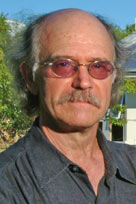|
A Texas A&M University architecture professor has been invited
to participate in a historic gathering of professionals seeking
solutions to humans' prevailing conflict between the modern built
environment and the human need for contact with natural systems
and processes.
Pliny Fisk, Texas A&M Fellow of Sustainable Urbanism, will
attend the May meeting sponsored by Yale University, where he
will be a featured panelist discussing "landscape perspectives" and "sustainable
design in practice."
"This interdisciplinary conference will bring together 40
scientists and practitioners from biology, neuroscience, psychology
and
building and landscape architecture, along with developers," Fisk
says. "We'll consider issues being addressed by a project
recently initiated at Yale with the stated goal of understanding
how human dependence on contact with the natural environment
can be translated into design principles, incorporating the cycles
of nature as functional bridges into our own life support systems.
How this information can expand the practice of sustainable or
restorative environmental design is one major purpose of the
gathering.
"People are highly dependent on contact with natural systems
and processes to be physically and mentally functional and whole," he
continues. "Despite this need, most of modern society equates
human progress with large-scale transformation of the natural
environment, and the prevailing development paradigm relies on
massive consumption of energy and resources, huge generation
of wastes and pollutants and separation and alienation of people
from nature."
In contrast to this trend, the notion of biophilic design has
emerged, incorporating ideas derived from biologist Edward Wilson's
concept of biophily (loving life). Such an approach, which Fisk
first introduced to a national architects' meeting in 1989, incorporates
knowing what phases of life support each cycle - water, heating/cooling,
air, food and materials - and can be linked psychologically into
the limits and rhythms of these cycles; documenting the benefits
of working and living in biophilically-designed spaces; and developing
techniques for integrating biophilic design principles into sustainable
design practice.
"The May conference promises to be a seminal gathering to
explore the history, science and practice of biophilic building
design
and development," Fisk says. "I'm looking forward to
being a part of it."
| |

Pliny Fisk
|

